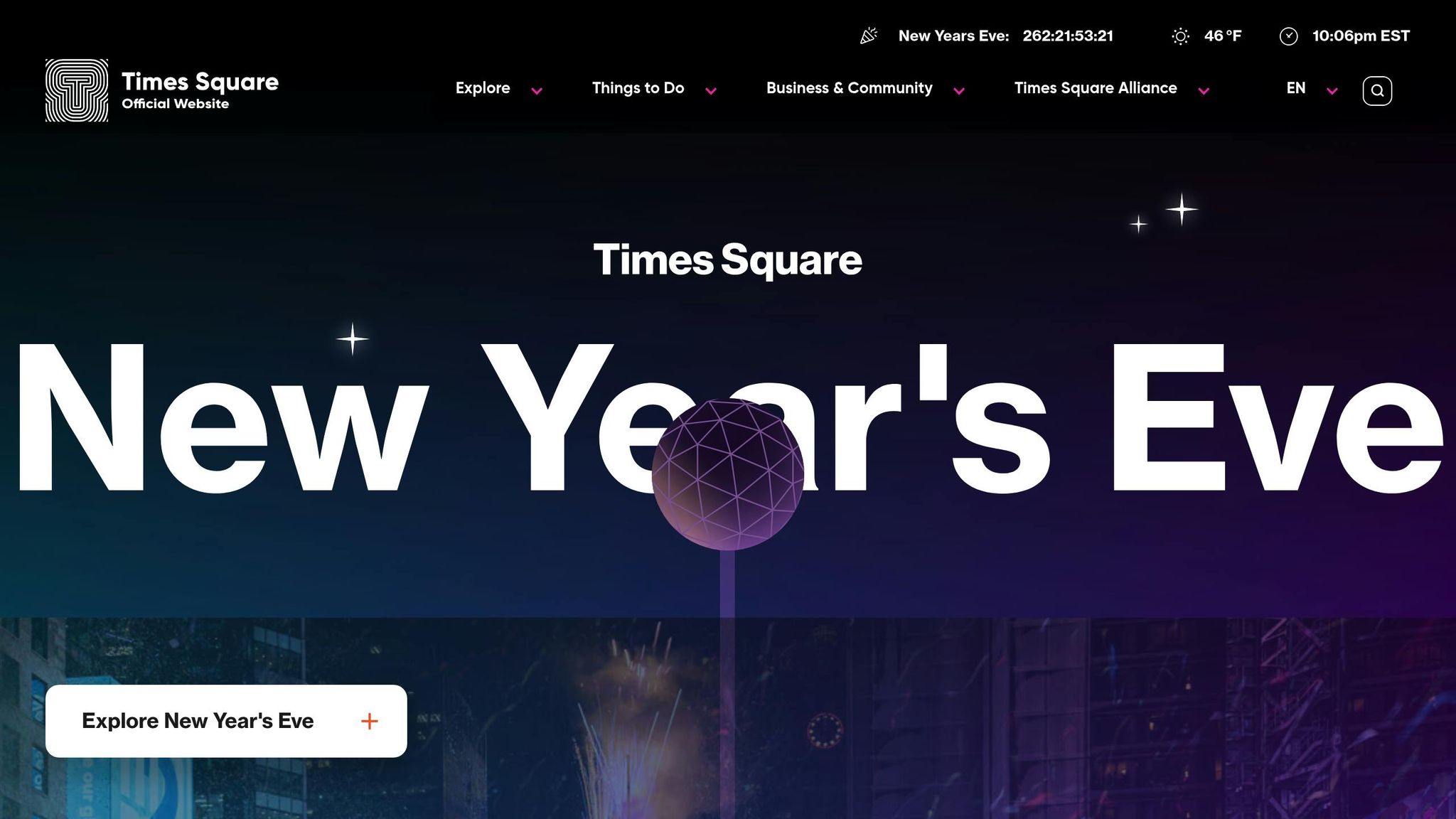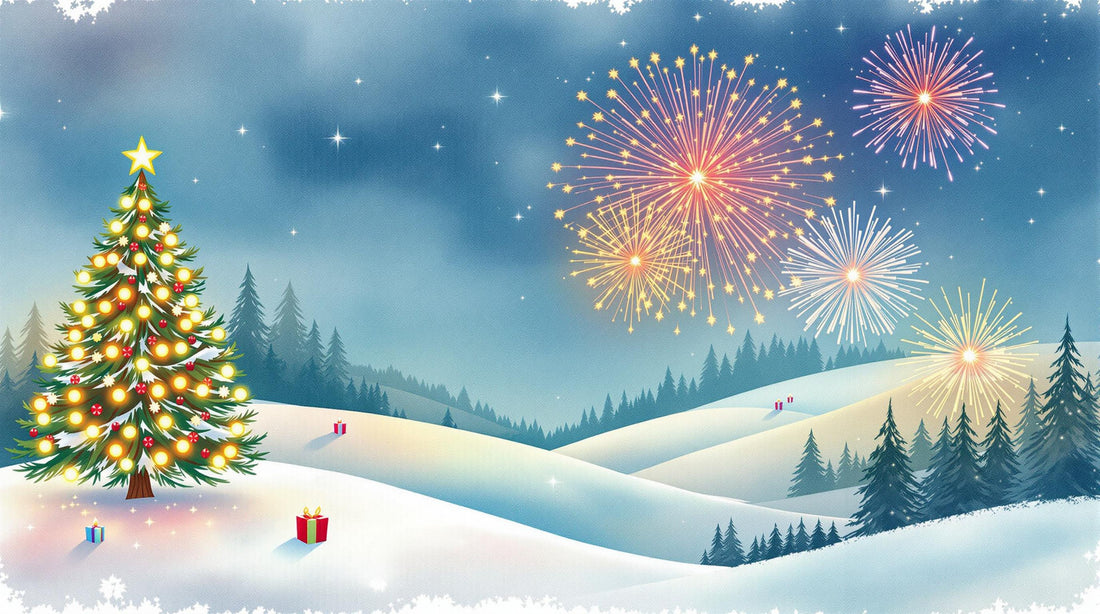Holiday trivia is a fun way to bring people together and learn about traditions from around the world. Here's what you'll find in this guide:
- Christmas: Learn about Santa's evolution, unique traditions like Japan's KFC dinners, and Sweden's love for Donald Duck cartoons.
- Hanukkah: Discover the story of the Maccabean Revolt, the menorah's symbolism, and the origins of dreidel games and chocolate gelt.
- Kwanzaa: Explore its 1966 creation, the meaning of the Kinara, and the significance of red, green, and black.
- Winter Solstice: Dive into ancient celebrations like Saturnalia and modern ones like Iran's Shab-e Yalda.
- New Year's: Uncover global traditions like Spain's 12 grapes, Italy's red underwear, and the Times Square Ball Drop history.
Holiday trivia connects people through shared knowledge and fun. Whether you're hosting a party or just want to learn something new, these questions will keep everyone entertained.
FUN Around the World Christmas Trivia || How Much Do You ...
1. Christmas Trivia
- The Evolution of Santa Claus
The image of Santa Claus we know today has gone through many changes over the years. Thomas Nast, a 19th-century cartoonist, helped establish Santa's recognizable appearance, while Coca-Cola's ads in the 1920s made it a cultural staple. Interestingly, James Edgar from Brockton, Massachusetts, was the first to wear a Santa suit in 1890, starting a tradition that continues to this day.
- Christmas Traditions Around the World
Christmas customs differ greatly across the globe, making them a fun source of trivia. For example, in Japan, it's common for families to celebrate with a meal from Kentucky Fried Chicken. Meanwhile, in Sweden, gathering to watch Donald Duck cartoons on Christmas Eve is a beloved tradition.
These unique traditions, along with Santa's evolving image, add richness to the story of Christmas.
2. Hanukkah Trivia
1. The Ancient Origins and Symbols
Hanukkah traces its roots back to the Maccabean Revolt in 168 B.C. This uprising led to the rededication of the Second Temple in Jerusalem after the Maccabees triumphed over the Greek-Syrians. The word "Hanukkah" means "dedication" in Hebrew. Central to the celebration is the menorah, which has nine branches - eight representing the nights of Hanukkah and one for the shamash, or attendant candle, used to light the others.
"Seeing Christians celebrate Christmas with such pageantry, and symbols that are so evocative, Jews sought to exalt their symbols during that same time".
This historical event is honored today through meaningful traditions and symbols.
2. Traditional Games and Treats
Hanukkah customs are steeped in history and carry on its legacy. The dreidel game, for instance, features four Hebrew letters - nun, gimmel, hei, and shin - which together form the acronym for "nes gadol hayah sham", meaning "a great miracle happened there". The tradition of giving Hanukkah gelt started in the 16th century as monetary gifts. By the 1920s, American candy makers, such as Loft's Candies in New York, popularized chocolate gelt wrapped in gold foil.
"The chocolate coins often have Jewish symbols from the Maccabees and the ancient temple impressed upon them".
sbb-itb-46dff1a
3. Kwanzaa Trivia
Kwanzaa is a celebration that honors heritage and traditions through meaningful practices and symbols.
1. Origins and Creator
Kwanzaa was established in 1966 by Maulana Karenga. Drawing inspiration from African harvest festivals, Karenga named the holiday after the Swahili phrase matunda ya kwanza, meaning "first fruits of the harvest". Its concept is rooted in Southern African first-fruits celebrations, aiming to reconnect African Americans with their ancestral heritage.
"Karenga introduced Kwanzaa in 1966 to unite African Americans, celebrating family, culture, and heritage." - Laura Payne, Freelance Writer
2. Symbols and Traditions
Kwanzaa is rich in symbolism. The holiday prominently features the colors red, green, and black. The Kinara, a candleholder, is central to the celebration, while an ear of corn represents fertility. Taking place from December 26 to January 1, Kwanzaa includes the tradition of exchanging gifts focused on education and cultural appreciation. These elements highlight the rich cultural significance of the holiday season.
4. Winter Solstice Trivia
Ancient Celebrations and Customs
The Winter Solstice has been celebrated by various civilizations for thousands of years. In ancient Rome, the Saturnalia festival (held from December 17 to 24) was marked by feasting, gambling, and even a temporary reversal of social roles. Today, modern traditions like Iran's Shab-e Yalda bring families together to enjoy poetry readings and seasonal delicacies.
"Since long before recorded history, the winter solstice and the subsequent 'return' of the sun have inspired celebrations and rituals in various societies around the world." – Sarah Pruitt, History.com
Many cultures also incorporate sacred rituals and honor deities to mark this significant time of year.
Sacred Figures and Deities
Different cultures pay tribute to unique deities during the Winter Solstice. In Peru, the Inti Raymi festival celebrates Inti, the sun god, through ceremonial offerings presented in golden cups. Meanwhile, in New Mexico, the Zuni hold the Shalako ceremony, which features 12-foot effigies symbolizing divine messengers. During this event, the Sun Priest formally announces the sun's rebirth, followed by traditional dances.
"On the longest night of the year, Iranians all over the world celebrate the triumph of Mithra, the Sun God, over darkness in the ancient festival of Shab-e Yalda (which translates to 'Night of Birth')." – Sarah Pruitt, History.com
5. New Year's Trivia
Times Square Ball Drop History

The iconic Times Square Ball Drop started in 1907, thanks to New York Times owner Adolf Ochs. The ball itself is an impressive 11,875 pounds, 12 feet in diameter, and packed with advanced LED technology capable of displaying 16 million colors.
Global New Year's Traditions
New Year's celebrations around the world showcase a wide variety of unique customs. In Spain, people eat 12 grapes at midnight - one for each clock chime. In Bethlehem, Pennsylvania, a giant 400-pound peep is dropped to mark the occasion. Greek households have a tradition where the head of the family smashes a pomegranate against a wall to bring good fortune. Meanwhile, in Italy, wearing red underwear on New Year's Eve is thought to bring luck.
Fun Facts for Trivia Enthusiasts:
- Kiribati is the first place on Earth to celebrate the new year.
- Over one billion people tune in to watch the Times Square Ball Drop annually.
- Roughly 360 million glasses of champagne are enjoyed during New Year's festivities.
- Around 2,000 pounds of confetti rain down on Times Square each year.
These traditions and fun facts highlight how deeply rooted New Year's celebrations are in history. In fact, New Year's Day dates back to 45 B.C., when Julius Caesar introduced the Julian calendar.
Conclusion
Holiday trivia adds a fun, interactive twist to gatherings, turning them into unforgettable celebrations. From age-old traditions to modern-day customs, these trivia questions not only entertain but also help preserve and share cultural knowledge.
"Trivia questions about holidays are a great way to connect people across time zones, creating friendly competition, learning and laughter".
Our trivia collections are designed with this vision in mind. They include carefully selected questions, presentation materials, and themed content to elevate your holiday celebrations. You can purchase themed trivia rounds for $14.99 or subscribe to our Monthly Trivia Subscription for $59.99, which delivers fresh, engaging content every week.
Holiday trivia combines entertainment with education, helping to keep cultural traditions alive while fostering meaningful connections. With our question sets, you can easily host events that celebrate history and traditions while bringing people together.
Make your holiday gatherings more engaging and memorable with our trivia solutions - where everyone can learn, participate, and connect through shared celebrations.
